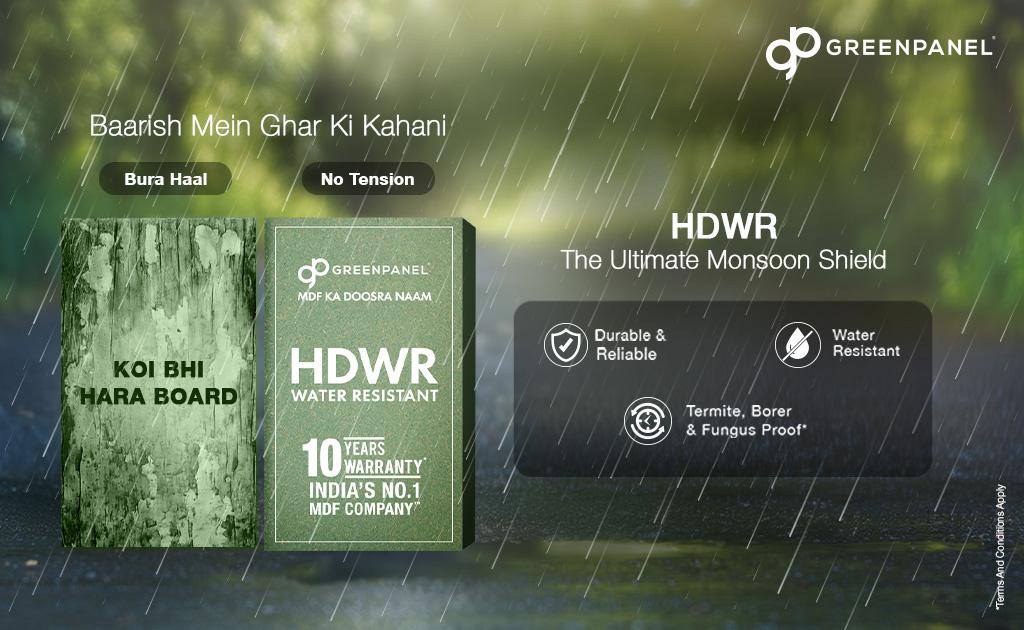
As the monsoon season continues, water damage in both residential and commercial spaces becomes a critical concern. Imagine a scenario where a retail store’s wooden displays begin to swell and warp under relentless humidity, or an office where wooden partitions start to show signs of deterioration. Such issues can disrupt operations and lead to costly repairs, threatening the smooth functioning of your business.
Another common scenario is an office where wooden furniture and cabinetry, exposed to constant dampness, become breeding grounds for termites and emit an unpleasant musty odor. Similarly, in a workshop, wooden workbenches and storage units might suffer from borer infestations, weakening their structure and creating potential safety hazards. These issues are prevalent during the rainy season, but there is a solution to safeguard your wooden installations. To address these concerns effectively, it’s crucial to understand how to identify the signs of water damage on wood.
Identifying the Signs of Water Damage on Wood
Understanding how to spot water damage can help you act quickly and prevent further issues. Look for these signs:
- White Circles: Cloudy or milky spots that appear on the surface of the wood.
- Black Circles: Dark stains resulting from mold or mildew.
- Discoloration: Changes in the wood’s color, often appearing faded or uneven.
- Warping: Twisting or bending of the wood caused by uneven drying.
- Buckling: Wood that rises from its surface, commonly seen in flooring or panels.
- Softness or Sponginess: Wood that feels less dense and compresses under pressure.
- Mold Growth: Fuzzy patches on the wood indicating mold infestation.
- Musty Odor: An unpleasant smell caused by stagnant water or mold.
Tips to Fix Water Damaged Wood
If you spot signs of water damage, here’s how to address it effectively:
- Dry the Wood: Begin by thoroughly drying the affected area. Remove any standing water and use natural ventilation or a dehumidifier to speed up the drying process.
- Remove Decayed Sections: Use a chisel or sandpaper to remove any decayed or rotted wood. Ensuring that all traces of decay are gone will help prevent further damage.
- Treat Water Stains: Apply petroleum jelly, mayonnaise, or oxalic acid to any water stains. Let the treatment sit for a few hours, then wipe off the residue.
- Sand the Wood: Once the wood is completely dry, sand the surface to eliminate remaining stains and imperfections. Start with coarse-grit sandpaper and work your way to finer grits for a smooth finish.
- Fill Gaps and Cracks: Use wood filler or epoxy resin to fill any gaps or cracks. Allow the filler to dry completely before proceeding.
- Smooth and Seal: After filling and sanding, apply a coat of varnish or sealant to protect the wood and enhance its durability.
Useful DIY Tricks for At-Home Repairs
Here are some handy tricks to help with wood repairs:
- Steam Iron Method: Place a damp cloth over the stained area and use a steam iron to lift stains and restore the wood’s appearance.
- Tea Bag Technique: Soak a tea bag in hot water and place it on water stains. The tannins in the tea can help darken the wood and blend the stains.
- Vinegar Solution: Mix equal parts vinegar and water, then wipe down the wood. Vinegar’s natural antifungal properties can help prevent mold growth.
- Baking Soda Paste: Create a paste with baking soda and water, apply it to moldy or stained areas, and let it sit before scrubbing off.
- Lemon Juice and Salt Scrub: Mix lemon juice with salt to form a natural abrasive paste. Use it to scrub away stains and brighten the wood’s surface.
- By following these steps and tips, you can effectively repair and maintain your wooden surfaces, ensuring they stay in great shape throughout the rainy season.
How to Prevent Wood Panels from Monsoon Damage with Greenpanel HDWR
To tackle the issues caused by water-damaged wood panels effectively, treatment and protection are options, but the ultimate solution lies in prevention. Here comes Greenpanel HDWR wood panels into the picture that offer a superior defence against water damage, allowing you to live hassle-free throughout the monsoon season. Here’s how they stand out
- Water Resistance: Engineered to perform well in high moisture environments, Greenpanel HDWR ensures that your wooden displays, partitions, and furniture remain intact even in damp conditions.
- Borer, Termite, and Fungus Proof: Our panels are fortified against common pests and fungi that thrive in wet conditions, ensuring durability and reducing the need for frequent repairs.
- Exceptional Durability: Built to last, Greenpanel HDWR maintains its strength and appearance, backed by a 10-year warranty, making it a reliable choice for long-term protection.
Thus, this monsoon season, safeguard your home or business from the threats of water damage and pest infestations. By choosing Greenpanel HDWR wood panels, you’re not merely selecting a product; you’re investing in long-lasting peace of mind. Crafted to excel in high-moisture conditions, our panels ensure that your wooden structures and furnitures stay resilient and pristine.

Leave a Reply